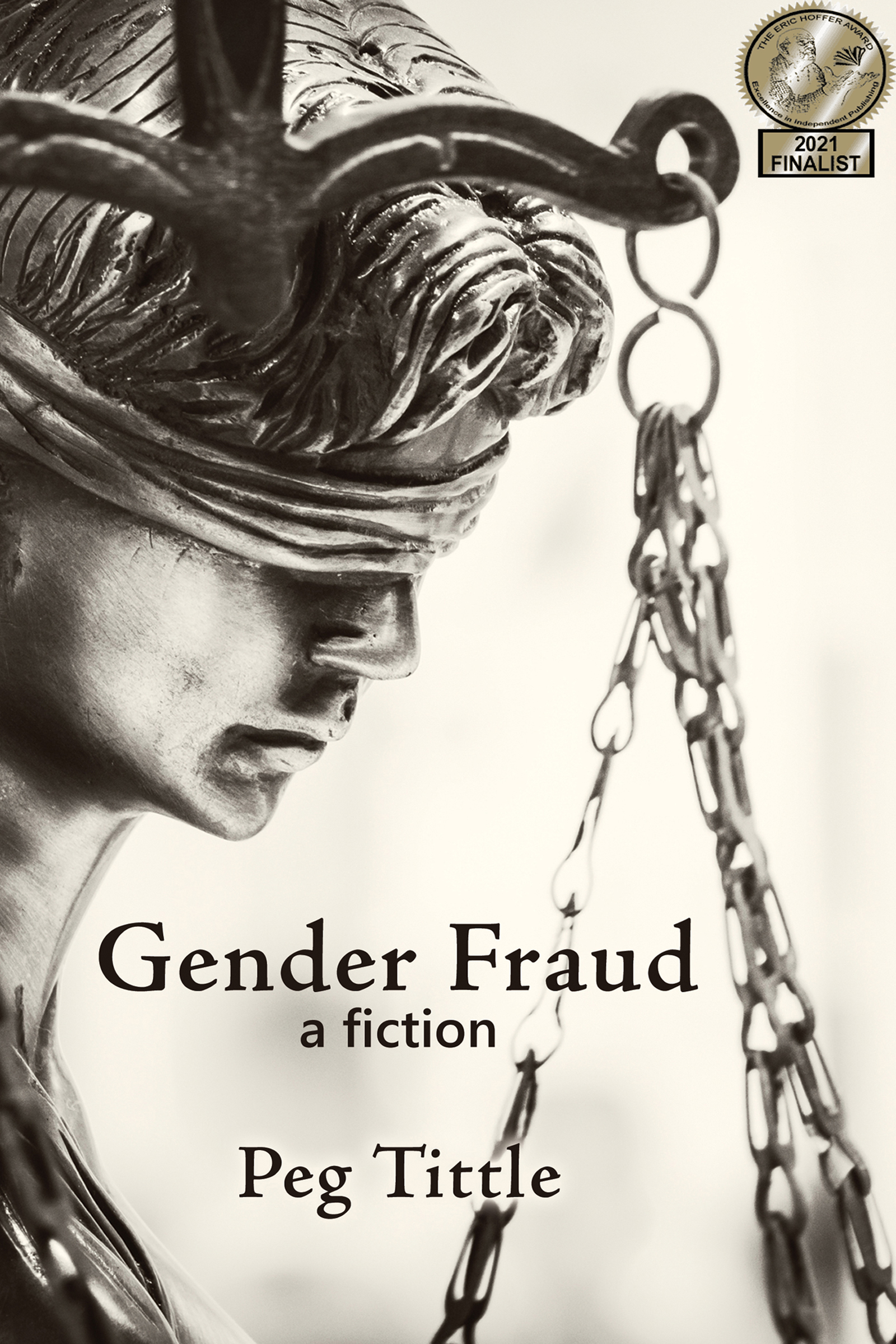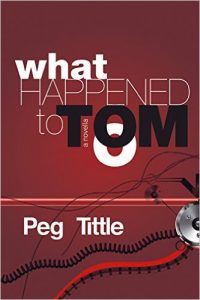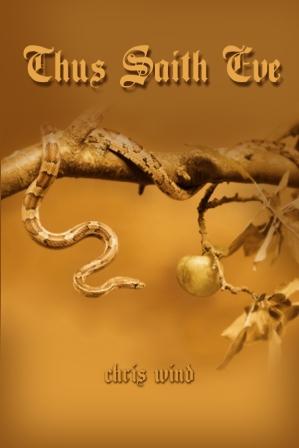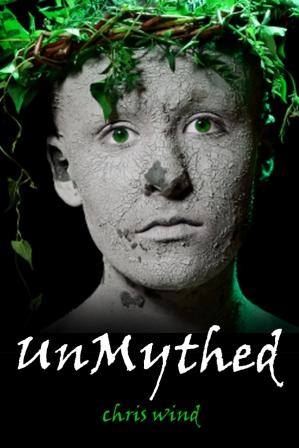from Thus Saith Eve, by Chris Wind
I am Mary
mother of God. Holy Mary, mother of God, pray for us sinners, now—it’s immortalized. I am indelibly identified by my relationship to a male: all of me has been denied, except that one part. And yet even that part has not been accorded full status: I am the mother of God! It’s a relation whose ramifications no one seems to recognize, to credit.
My existence became important, became worthy of mention, only after (only because) Christ became important and worth mention. My childhood, my girlhood, is never looked at, and yet it was my life before Christ that was responsible for my being the mother of God in the first place: I was favoured (Luke 1:28, 30), I was chosen because of the goodness and purity of my life[1]—and yet none of that purity, none of that goodness was documented.[2] From what was considered important enough to document, one gets the impression that Christ and his apostles were the only ones capable of good works.
The issue of good works leads us to another unrecognized ramification of my role. Christ, my son, is known internationally for his compassion, his love, his generosity, his forgiveness—he’s famous for his ethics: well who do you think taught him right from wrong? His mother, of course! Who is it who always teaches a child the first and formative values?
It was no easy feat raising the son of God! Think about it: here we have a little boy who has the gift of miracle-working—do you think for one minute he always used his powers to serve God? Of course not! For a while he went around creating fantastic toys (as a carpenter’s family, we couldn’t always afford the best), and there was no end of trouble because all of the other children wanted ones just like them (I had to laugh at some of them, the rascal had imagination!). And I had to explain—somehow. He also played some very nasty tricks on people who angered or upset him (once he changed some children into goats).[3] It took some doing to get him through that phase quickly! So even though he was the son of God, he had to be taught that there is a good way and a bad way to use his powers. And, as his mother, I taught him.
In fact, I suspect at times that the only reason I wasn’t chosen to spread Christian morality was because God knew no one would listen to a woman. It’s sad, but it’s true. So the next best thing he could do was choose me to be his mother. He didn’t have to. Did you ever wonder why he even bothered? I mean, the virgin birth proves he—[4]
Let’s consider next this issue of virgin birth. I am not going to debate its truth. I have realized for a long time that what is believed to be true matters more than what is true. And the story of the virgin birth is believed to be true.[5] But the belief is at my expense! Because of it, I was suspect of infidelity—a very serious accusation then, I could’ve lost my life (Matthew 1:19)! Fortunately the suspicion was disconfirmed.[6]
Furthermore, to believe in the virgin birth denies me the joy of sexual intercourse—I am not even allowed the biological prerequisite to motherhood. (That is, I am not allowed the pleasing one. The painful one, childbirth, I am allowed: contrary to popular belief,[7] Christ was the son of woman, and he was born of flesh and blood, not of the spirit—I have the scars and stretch marks to show it.)
Further still, the ramifications of this belief go beyond the personal. I have become a universal symbol: the virgin birth implies that intercourse is undesirable, that natural conception is inferior, that the state of virginity is more blessed than the state of non-virginity.[8] I resent symbolizing such a concept: one state is neither more nor less blessed. And I resent being in the awkward position of putting women into an even more awkward, indeed impossible, position: motherhood is pure, but the prerequisite, sexual intercourse, is impure. Well what is one to do then?[9]
Let me go on to yet other unrecognized ramifications to my role as mother of God. For instance, a little publicized fact is that I had some powers of my own. In fact, many people at the time had psychic powers—clairvoyance, psychokinesis, telepathy—it was a time before those skills evolved out of use.[10] I could tell you of several proofs, but I’ll choose one which is documented (but again, unacknowledged): near the end of my life, I went with St. John to Ephesus, then ‘appeared’ in Jerusalem. (However, I fell asleep when I got there; a feat like that at my old age took a lot out of me.) Such an event should not surprise you—I am, after all, venerated as healer, said to have the powers of ‘miraculous intervention’; and the power of relics of mine was reaffirmed as legitimate by the Council of Trent (1545-64); and don’t forget the Shrine at Lourdes, established in 1858, to commemorate my appearance to Bernadette, and the Shrine at Fatima, 1917, for when I came to those three shepherd children.
Another example, the one last point of ‘credit not given when credit is due’ that I want to make, is best illustrated by examining the image, by examining how I am portrayed. Think of the Madonna. Any madonna will do, they’re all the same. Or think of the pietà. Any pietà. Always the young girl with the blank face, like she’s never had a real thought or a strong feeling in her life. Real thoughts and strong feelings! One of my children went through life as the son of God—wouldn’t that make you think? Then he—my son—had nails driven through his body—wouldn’t that make you feel? Can you understand the struggle to understand, or at least accept, such an injustice without anger, without hatred? Your (male) image-makers call me mother of God, but they don’t take into account what that means, they haven’t understood what that really means! I lived, through days, months, years, I became a middle-aged woman, an old woman.[11] In the pietà, my son is thirty-three—that should make me forty-eight, but do I look it? No, I have been denied my life, my experience, my self. And if you do not recognize my reality, you do not recognize me.
Yes, I am the mother of God. But it appears to be in name only. For all intents, purposes, and effects, Christ (like almost every other male in The Bible) may as well have begotten himself.
[1] Later this was not enough: in 1854, Pope Pius IX instituted the concept of the Immaculate Conception which insisted that my purity extend back all the way to a conception unsullied by original sin in order to provide a satisfactorily chaste womb for the birth of Christ.
[2] Actually there are several accounts of my life before and after Christ, but they have not been admitted to The Bible because they are not considered ‘authentic’ enough. The Protoevangelium of James for instance, written around 150-180 A.D., tells that my parents were Anna and Joachim, and that I lived in the temple of the Lord from the age of three.
[3] See the Arabic Gospel, Chapter 40.
[4] God didn’t really need a biological mother for Christ. He obviously didn’t really need a biological father. In fact, God has Christ born without a human father, because that would’ve detracted from his divinity. But it seems having a human mother didn’t detract as much—hasn’t anyone ever considered the implications of that one?
[5] And yet there are innumerable such stories in pagan mythology, but no one dreams of taking them seriously. This one, they took seriously.
[6] But not on my word, no, my word was not good enough: only after an angel appeared and explained to Joseph, did he believe it.
[7] Which is amazing, in view of the many confusions: (1) Was it a virgin birth or not? If it was, if Joseph wasn’t the biological father, then doesn’t the genealogy tracing Jesus through back through Joseph to David and Abraham (Matthew 1:1-17) break down? (2) Was it a virgin birth or not? The doctrine of virgin in partu claims I did not experience the ‘pangs’ of childbirth, but Salome, my midwife, will vouch for the pain; and that eyewitness account of her arm withering because she reached out and touched me, not believing the hymen could still be intact but discovering it was, has been relegated to the Protoevangelium (I wonder which part of the story was decided to be invalid. If it was the intactness of the hymen that was in doubt, they had to be considering then either sexual intercourse or natural birth as a possibility.)
[8] This view continues to be manifested by the vow of celibacy taken by nuns and priests; by the popular male habit of according extra status to ‘deflowering’ a virgin; by popular porn (by men for men) which exhibits women in childish, innocent, virginal costume and character; and by popular ‘kiddie’ porn (also by men for men) which exhibits children as sexually desirable—all of which implies that the state of virginity is something special, an added bonus.
[9] Furthermore, the state of motherhood may be pure, but the physical experience of it, childbirth, is not: consider the ‘purification rites’ I had to undergo (Luke 2:22) even though I had just given birth to the son of God!
[10] Peter, for instance, made some dogs talk; he also raised the dead, and flew (The Acts of Peter, Chapter 9). John, another example, controlled the bedbugs that were bothering him one night (The Acts of John, Chapter 61).
[11] Like my existence before Christ’s birth, my existence after his youth also becomes unimportant—it’s as if I was his mother only for the first ten or fifteen years. Even he seems to have thought that: at first he simply wouldn’t acknowledge me as his mother—I was the same to him as anyone else who followed God (Mark 3:31-35); later, he had the hurtful ingratitude to call me ‘woman’ (John 2:4)—not ‘Mom’, not ‘Mother’, not even ‘Mary’.
***
According to Christian mythology, God sent his son, Jesus Christ, to save us by dying for our sins. Mary (a virgin, wife of Joseph) was chosen to be the mother, and impregnation occurred without sexual intercourse—thus the ‘virgin birth’. (The ‘Immaculate Conception’ is usually thought to refer to this conception of Christ, but actually it refers to the conception of Mary—see the first footnote.) This remarkable event led to suspicion on Joseph’s part; at that time, a man could kill his wife for adultery. However, an angel came to explain the miracle to Joseph, and all was well.
The figure of Mary (the ‘BVM’—’Blessed Virgin Mary’) is most prominent in the Roman Catholic sect of Christianity. She is ‘celebrated’ in the five ‘Joyful Mysteries’, which are often depicted in pictures: the Annunciation (when she is told she will be the mother of Jesus, Son of God), the Visitation (she visits a friend with the news), the Birth of Jesus (in a stable at Bethlehem), the Presentation (she presents Jesus in the temple), and the Finding in the Temple (when Jesus is ‘lost’, she finds him there). She is also ‘allotted’ two of the five ‘Glorious Mysteries’: the Assumption (she dies and is carried to heaven by angels) and the Crowning of Mary (she is crowned Queen, which gives rise to her power of intervention).
The bit about Jesus creating toys and turning children into goats is documented (see the Arabic Gospels, below); so is Mary’s ‘teletransportation’ feat (but unfortunately I can’t track down the source of my notes for this one) and her appearances at Lourdes and Fatima (see the encyclopedia citations, below).
A very common prayer is the ‘Hail Mary’: “Hail Mary, full of grace, the Lord is with thee; blessed art thou among women, and blessed is the fruit of thy womb, Jesus. Holy Mary, Mother of God, pray for us sinners, now and at the hour of our death. Amen.” It is often given as penance (that is, one must say so many ‘Hail Marys’ to absolve oneself of one’s sins) and it is a major part of the Rosary (a string of beads one passes through one’s fingers, saying a certain prayer at each bead).
John 2:4.
Luke 1:28, 1:30, 2:22.
Mark 3:31-35.
Matthew 1:19.
The Arabic Gospel, The Apocryphal New Testament. tr. Montague Rhodes James. London: Oxford University Press, 1966. 68.
Protoevangelium of James, The Apocryphal New Testament. 39-49, 74.
The Acts of John, The Apocryphal New Testament. 242-243.
The Acts of Peter, The Apocryphal New Testament. 313.
The Columbia Viking Desk Encyclopedia, ed. William Bridgwater, New York: The Viking Press, 1953. 1:412; 2:736.
















